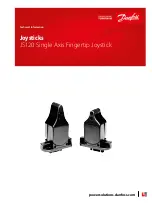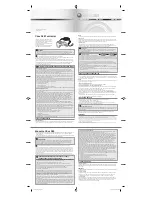
4-11
©
2012 Mobile Climate Control
T-348 Rev. 07/2012
4.12 SERVICING THE LIQUID LINE SOLENOID VALVE
The Liquid line solenoid valve (Figure 4-9) requires
no maintenance unless a malfunction to the internal
parts or coil occurs. This may be caused by foreign
material such as: dirt, scale, or sludge in the
refrigeration system, or improper voltage to the coil.
There are only three possible valve malfunctions: coil
burnout, failure to open, or failure to close.
Coil burnout may be caused by the following:
1 Improper voltage.
2 Continuous over-voltage, more than 10% or un
der-voltage of more than 15%.
3 Incomplete magnet circuit due to the omission of
the coil housing or plunger.
4 Mechanical interface with movement of plunger
which may be caused by a deformed enclosing
tube.
Failure to open may be caused by the following:
1 Coil burned out or an open circuit to coil connec
tions.
2 Improper voltage.
3 Defective plunger or deformed valve body assem
bly.
Failure to close may be caused by the following:
1 Defective plunger or deformed valve body assem
bly.
2 Foreign material in the valve.
4.12.1 Coil Replacement
a. It is not necessary to remove the refrigerant charge
from the system.
b. Place main battery disconnect switch in OFF posi
tion and lock.
c. Disconnect wire leads to coil.
d. Remove coil locking nut and O-Ring, then the
threaded collar.
e. Lift coil from enclosing tube and replace.
f. With the coil installed replace the threaded collar,
then the O-Ring and locking nut.
g. Connect wire leads and test operation
4.12.2 Internal Part Replacement
a. Perform a low side pump down. Refer to para
graph 4.5.1 .
b. Carefully loosen enclosing tube assembly and en
sure no pressure remains within the valve. Disas
semble valve and replace defective parts.
c. Assemble valve and leak check.
d. Evacuate low side and re-open system.
4.12.3 Replace Entire Valve
a. Perform a low side pump down. Refer to para
graph 4.5.1.
b. Remove coil assembly. Refer to paragraph 4.12.1.
c. Disconnect valve from liquid line and filter-drier.
d. Unbolt valve body from frame and remove from
unit. See Figure 4-9, item 8.
e. Install new valve onto frame.
f. Apply a light coat of oil to the O-Rings and con
nect the liquid line and the filter-drier.
g. Leak check connections.
h. Evacuate low side and re-open charge isolation
valve.
i. Replace coil assembly and test operation.
1. Locking Nut
2. O--Ring
3. Threaded Collar
4. Coil
5.
Plunger Assembly
6.
O-Ring
7.
Body
8.
Mount
8
1
2
3
4
5
6
7
Figure 4-9 Liquid Line Solenoid Valve
















































